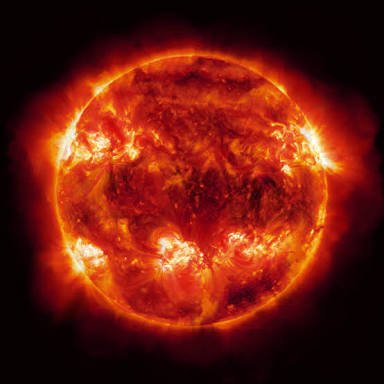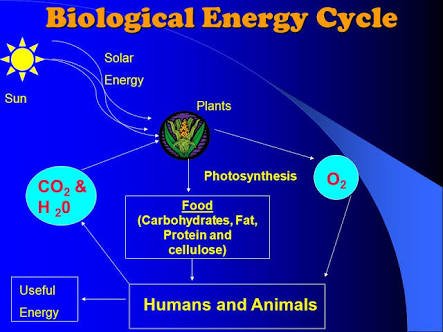The sun: the solutions to the cool planets??
One of the probable causes of global warming is the emission of carbon dioxide by man into the atmosphere. Apart from some recalcitrant, everyone is aware. Unfortunately, although education for sustainable development is transversal in terms of both discipline and level, it is not always easy for high school students to understand that carbon dioxide is actually not a pollutant. and that it is related to global energy needs .

The Planet Energy site gives us some keys to understand the origin of anthropogenic emissions of carbon dioxide and how to reduce them.
THE ENERGY CYCLE: COMPLEX AND AMAZING!

These few scientific explanations can serve as an introduction to a course on solar energy or global warming in high school.
The origin of energy
For all our daily actions, a supply of energy is necessary. Basically, there are only two sources of energy in our environment : solar energy and geothermal energy . But the latter only represents a tiny fraction of the available energy. Both are the result of transformations at the very heart of the nucleus of the atom . In the sun , it is the fusion of small nuclei that produces energy . In the Earth , it is the fission of big nuclei .
A redistribution circuit that affects all living beings ...
The colossal heat energy of the sun is mainly discharged into the surrounding space by electromagnetic radiation . And that's how it comes to us: when this radiation strikes the Earth , it is exploited by plants to produce complex molecules (glucose, fructose, cellulose, etc.) necessary for their metabolism from carbon dioxide. of the atmosphere and the water : it is photosynthesis . Plants therefore consume carbon dioxide to store the sun's energy in chemical form .
The energy of these molecules benefits the entire animal kingdom. Animals are not able to capture and transform the energy of the sun , they must consume the plants to feed their own power plant , necessary for their survival . As for us, humans, when we burn wood, just as when we breathe (thanks to the oxygen produced by the plants), we release the energy contained in the molecules by doing the opposite reaction to their photosynthesis . The combustion , such as breathing , so is a way to release the energy of the sunthat the plants had stored chemically. It's as if at night, the light radiating from the fire in the chimney was a small piece of sunlight.
And all the circles
When micro-organisms die and fall to the bottom of the ocean, their degradation at the geological time scale leads to the manufacture of oil . Thus, when we exploit oil, It is still the energy of the sun which we use . The problem when we choose this pathway is that we release carbon dioxide into the atmosphere,who was there several hundred thousand years ago. The current ecosystem is not able to absorb this excess carbon and the carbon dioxide concentration in the atmosphere rises inexorably, taking with it the temperature rise of the ecosphere and the acidification of the oceans .
LIMIT THE IMBALANCE BETWEEN OUR RESOURCES AND OUR NEEDS, A NECESSITY FOR TOMORROW.
Faced with the incessant rise in energy demand , we must find new sources of energy other than oil. Ideally, we should completely change all our production models to stop burning the carbon stored in the bowels of the Earth. But the transition can not be done in a snap (not to mention the geopolitical problems ...) and the use of several sources of energy (see the Decryption " What is the energy mix .") Is unavoidable.
SOLAR ENERGY, AN AMBITIOUS ALTERNATIVE ... AND PROBLEMATIC!

Why not use solar energy directly by converting it into electrical energy?
This is the promising track followed by the solar industry. On average, 340 watts reach each square meter of terrestrial ground . The world's electricity fleet is approximately 2.5 TW, so it would take approximately 7,500 km² of photovoltaic panels to replace the entire global electricity generation fleetit would be on a circle 100 km in diameter, less than 1 / 100th of the surface of the Sahara ... One starts to imagine a world where all the energy needed for humanity would be produced in large arid and barren areas . Paradoxically, solar energy would then be the solution to stop global warming !
A transition fraught with pitfalls
However, the transition to all solar requires a few more decades. On the one hand, solar panels transform only about 20% of the solar energy they receive into electrical energy. On the other hand, solar power generation , although increasingly profitable, is still too expensive compared to traditional forms of production . It is only by 2060-2075 that we hope to produce 30% of the energy consumed by solar energy against less than 2% currently. In the meantime, we will have to review our daily practices to reduce the energy bill and the production of carbon dioxide ...
Imagesource